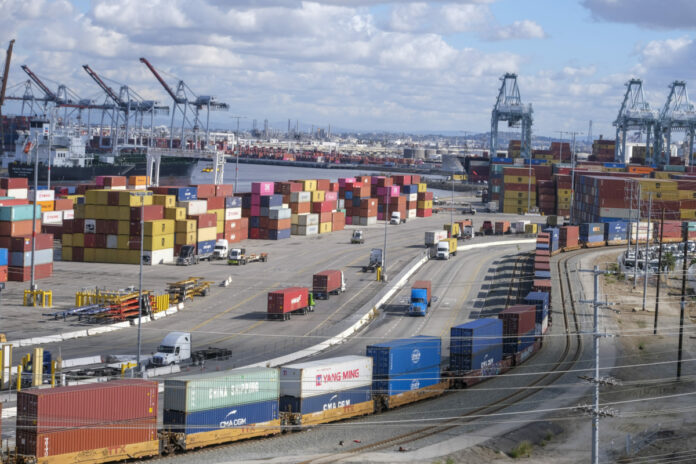Both of Los Angeles County’s container ports saw gains in November that support their claims of shippers continuing to recalibrate to move their cargo here in light of the labor agreements this summer.
The Port of Los Angeles moved 763,262 TEUs – the acronym for twenty-foot equivalent units, the industry measurement for cargo container shipment – of cargo in November, while the neighboring Port of Long Beach moved 731,033 TEUs that month. It was the fourth consecutive month of year-over-year gains for L.A. and the third consecutive month for Long Beach, as American consumers have driven strong retail spending this holiday season.
“We are recapturing market share, online shopping is on the rise and retailers are keeping the shelves stocked to meet rising consumer demand for the holidays,” Port of Long Beach Chief Executive Mario Cordero said in a statement before the Christmas holiday. “We remain optimistic as cargo returns to this critical gateway for trans-Pacific trade.”
The Port of L.A.’s haul included 384,619 imported TEUs in November, representing a 25% increase from last year. Similarly, the Port of Long Beach recorded 355,339 import TEUs, a 37% jump from last year.
Port of L.A. Executive Director Gene Seroka has for months touted the “resiliency of the American consumer,” and November was no different. He pointed to a National Retail Federation statistic that 200 million buyers participated in both in-person and online shopping between Thanksgiving and Cyber Monday, a new record that represents an 8% increase from last year.
“Those import numbers reflect the ongoing strength of the American economy, powered by our consumers,” Seroka said during his monthly media briefing.
On the export side, the pictures were a little different. While L.A. boasted 111,755 export TEUs – an increase of 24% from the prior November, and the sixth consecutive month of gains – Long Beach recorded 108,798 TEUs, a 13% decline. Both ports, however, saw gains in the empties they sent out to Asia. L.A. moved 266,888 empty TEUs and Long Beach moved 266,896, increases of 10% and 30.6%, respectively.
December was looking good for imports ahead of Christmas. Meanwhile, Seroka speculated that January would also be a strong month for the San Pedro Bay Port Complex, as Asian retailers customarily look to offload stock for Lunar New Year.
Asked to forecast the bigger picture for 2024, Seroka noted that the consumer price index in November had inflation down slightly again, to 3.1%. Given the recent labor agreement for West Coast ports – which experts point to as a catalyst for rising numbers here – he also said the East Coast ports’ labor situation would be something to watch next year.
On top of that, Seroka said, the current shipping market is highly favorable to manufacturers.
“There’s a lot of vessel capacity on the water right now, which means it will be a buyer’s market for cargo owners – both imports and exports,” he said. “We can expect to see lower prices for shipping services in order to fill up those newer and cleaner vessels.”

